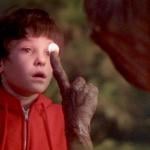This interview was originally published at Promontory Artists Association in 2004 upon the release of Jean-Jacques Annaud’s film Two Brothers.
–
With his new film Two Brothers, French filmmaker Jean-Jacques Annaud has produced one of the year’s best family films. My review of the film is here. I got up early to speak with Annaud by telephone this week. He was in France where it was already mid-afternoon. He spoke about the challenges of working with tigers, the themes that recur in his films, and what he hopes his film will communicate to his audiences.
Jeffrey Overstreet:
It was more than a decade ago that you made The Bear, and you’ve done a wide variety of films since then. Going back to work with your lenses trained on animals, how was it different this time?
Jean-Jacques Annaud:
Working on The Bear, I so much identified with the bear, and this time, I’m trying to identify with tigers. Bears are animals with very few expressions, whereas the tigers were very able actors with a large variety of expressions.
The other difference was that I did not use the type of cameras that I used for The Bear. For this film, I used brand new digital cameras that allowed us to film so much more, which was a great difference, because you never know when “the magical moment” is going to happen, and thus it is very bad if there is no more film in the camera or if you don’t know and you’re holding your breath.
The other thing that was different was that tigers are much more dangerous than bears. Therefore we spent a lot of time behind bars. We were in cages while the animals roamed free.
JO:
You worked with a different cinematographer before. For Two Brothers you called up Jean-Marie Dreujou. Why?
JJA:
I will have to be candid—my usual photographer freaked out when I told him that I wanted to shoot with the new digital cameras. He was not prepared for that kind of adventure and he wasn’t sure if the cameras were ready. I spoke to Jean-Marie, and I had seen a number of the films he had done with my friend Patrice Leconte… I love his work.
JO:
Your films have been quite varied—from the monasteries of The Name of the Rose to the battlefields of Enemy at the Gate, and now another family film. Do you see a common thread running through the stories that you choose to film?
JJA:
I always feel that I am repeating myself. My films revolve around the same theme—the clash of cultures. For this film, it was the human culture and the animal culture. And then there is also the theme of apprenticeship. It’s the theme of “Learning can save your life.”
So here in this film, it is the reunion of many of my favorite themes. And the period is fascinating to me, precisely because of the cultures involved.
JO:
Most animals stories deal with survival. Animals face trouble from predators, from humans, and other things. For animals, we understand survival is a central concern. When we look around, it is tempting to see life as a “survival of the fittest” struggle. But human stories focus on themes of sacrifice, love, selflessness. Where do such different human virtues—compassion, selflessness, sacrifice—come from? Do you think we are different than the animals in some way, and that we should behave differently? Or do you think that we are just believing an illusion, that we are different than animals?
JJA:
We’re trying hard to be different. Of course, as I worked with the tigers, in a way I could see everything that we have in common. It is easy to identify with an animal when you remember that 99.9% of our genes are similar. But that 0.1% is interesting. For centuries now we’ve been trying our very best to escape that world of survival, that we can be more generous, to keep our society together, to have tolerance for other cultures and for people that do not think the same way as we do. Therefore, no… I see man as made of the same flesh as animals, but making ever day an effort to deal with that problem.
These animal impulses that are very troublesome, like the warrior impulse, those survival instincts that are not generous… it is precisely the key of being human to make that effort to be different.
It is a long evolution, but I think the difference comes from people of particular religions, monotheistic religions. We are told in very particular terms that we are different. But I lived with a very authentic tribe in Africa—that was like, 40 years ago—and the people there did not know that we are different. For them, we are just a part of nature. That is why among their gods they have trees and animals, because they see themselves as part of nature.
JO:
Your children’s films are more complex, more spiritual in a way, and in some ways more demanding than much of what is available for young people. So much of the entertainment produced for young people is shallow and disposable.
JJA:
I think it is not good to give children silly stories. We always seem to treat children as younger than they are. And yet we can see how much they desire to learn more and learn better.
JO:
There is an ongoing debate in American culture right now… I’m sure elsewhere, but it seems very prevalent in the American press. We are arguing about how “safe” movies have to be for children. You may be aware, there is even a new DVD player now that edits violence and sexuality out of movies to protect young viewers. Do you think it is such a serious problem that we should be cutting up movies?
JJA:
It’s a very complex debate.
It s my feeling that people are attracted to movies about violence and sexuality precisely because those are part of what I was referring to earlier—that “tiger behavior.” Therefore, those things do appeal to that weaker part, that “animal part” of our personality. Now I feel it is also important to make sure that children understand the violent responses that we have, but that they understand that violence and killing brings suffering. If more people understand that violence is painful, it would help. It is important that artists who show sexuality and violence have to keep those things in a reasonable proportion. The Hollywood approach is not one that I like a lot because it is exploitative and it does not prepare us for responsible behavior.
JO:
Do you think it is the responsibility of the parents or the movie studios or the artists to monitor the elements of moviemaking?
JJA:
Frankly, I think it belongs to the artist. I think we need to be more careful with what we are doing.
JO:
What is it that you hope viewers will be thinking about after they see Two Brothers?
JJA:
Tolerance… if a person is able to understand tigers, I guess that can help people to understand others, other cultures, other nations.
JO:
It is a very popular theme right now—tolerance. Do you think tolerance is always the answer? Sometimes, we look at another culture and we see behavior that seems criminal, and we want to act to prevent it or do something about it. It seems that might require us to be, in a certain sense, intolerant, in order to do the right thing.
JJA:
We should never never be intolerant. It is important to remember that you must identify with the other, with that person and their purpose and their rage. You have to assuage that rage, to calm it down. And only when you calm it down can you understand why [they are different.] As long as people do not want to understand the other, this leads to a terrible situation where we have no idea why they are behaving that way. It is a shame that we are not able to understand better, and thus we will not cure the rage. We end up instead with more violence and more rage.











